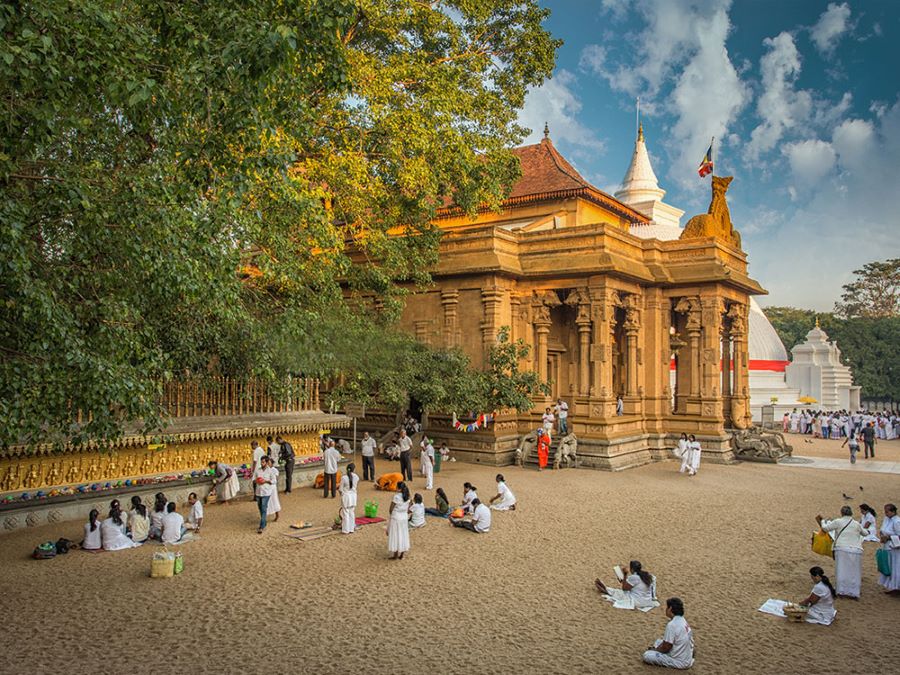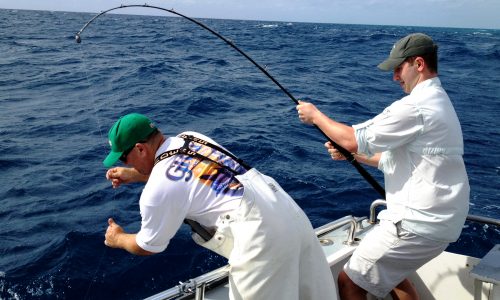Kelaniya Raja Maha Vihara or Kelaniya Temple is a major Buddhist temple in Kelaniya, Sri Lanka, 7 miles from Colombo. Respected Professor Kollupitiye Mahinda Sangharakkhitha Thera is The chief monk of the temple. Buddhists believe that the temple was sanctified mostly during the third and final visit of the Lord Buddha to Sri Lanka, eight years after his transcendence. Thereby, its history would have gone back to 500 BCE.
The temple is not that far from Negombo, making visiting it one of the best things to do in Negombo.

The indigenous artist Solias Mendis, renowned for his drawings depicting significant events in the history of the Buddha and Buddhism in Sri Lanka, as well as the Jataka legends, contributed to the temple’s fame with his artwork. The Duruthu Maha Perehera parade takes place every January, showcasing cultural and religious festivities. Additionally, an 18-foot stone statue of the Bodhisattva Avalokitesvara stands within the temple premises, adding to its grandeur.
The Location of Kelaniya Temple in Sri Lanka
At Kelaniya, some 10 km northeast of Colombo, in Sri Lanka, rises the legendary Kelani Rajamaha Viharaya, one of the most respected ancient Buddhist temples in the country. Built on the top of a small mountain warmed by the waters of the Kelani River, this magnificent shrine offers one of the greatest views that this small island, the jewel of the Indian Ocean, has ever given to visitors.
The Best Time to Visit Kelaniya Temple
You can visit Kelaniya Raja Maha Vihara at any time of the year. It is advisable, however, that you visit Kelaniya Raja Maha Vihara in January to experience one of the important Buddhist processions conducted by this temple.
One of the most extravagant processions in Sri Lanka, consisting of many elephants, conducts the ceremony. The ideal time of the day to visit Kelaniya Raja Maha Vihara would be during the evenings so that you can see the walls and ceilings of the shrine all illuminated so that you can see the walls and frescoes elaborately.

What to see at the Kelaniya temple
1) The Kelaniya stupa (dagoba) marks the location where it is reported that the Buddha sat on a bejeweled throne during his third trip to the island. The throne is thought to be in the stupa.
2) The Viharaya is the oldest temple building in Kelaniya. The external walls are adorned with friezes of elephants (Gajas) symbolizing fortitude, dwarfs (Gansas) promoting prosperity, and geese (Hamsas) distributing the teaching of the Buddha.
3) In Hindu mythology, people also know gnomes as Ganas. They are friendly and happy to be entertaining themselves and others with music and stunts. Ganas’ postures at the Kelaniya Temple are incredibly humorous. This temple also has a fascinating link to the Ramayana Epic, making it one of the key attractions of the Ramayana tours in Sri Lanka.
4) The inside of the temple building has a seated Buddha in the room on the right side. Adorning the center hall are 19th-century paintings that emulate the Kandyan style and typical Kandy painting styles. These paintings depict the Jataka “birth tales” from the Buddha’s history.
5) Kelaniya’s most famous sculptures, though, are the magnum opus of Sri Lanka’s most popular 20th-century Buddhist painter, Solias Mendis. They highlight significant scenarios from the Buddhist past of the island.
6) Buddhists and Hindus alike explore a shrine situated between the stupa and the Buddhist central temple. They dedicate it to Vibhishana, who, according to the Indian Ramayana, became the Ruler of Lanka as a consequence of the intense fight and is venerated as the protective deity of the Kelaniya area.
7) The Hagenbeck brothers reported that the eastern main entrance of the Kelaniya Temple influenced them to build the famous Jugendstil Gateway of their zoological garden near Hamburg, Germany.
So, it’s quite understandable that Kelaniya Raja Maha Viharaya has many attractions to witness and enjoy during the visit.
The Duruthu Perahera and Festival
In this ancient temple, the ritual “Duruthu Perahera” takes place every year on the pre-full moon day of January (Duruthu Month.) On this day, thousands and thousands of people from all over the country and hundreds of international visitors are on their way to the Kelaniya Raja Maha Vihara temple to see this amazing sightseeing. All the roads around Kelaniya today appear, as it were, to connect to Kelaniya and nothing else.
The procession itself is a ceremony representing the age-old religious practices and rituals of the country. It demonstrates the ancient customs and cultural heritage of the region. It displays to the world the age-old indigenous songs, folk music, and syncopated dance styles. These cultural expressions have evolved over the centuries around Buddhism and Buddhist traditions on the island.
They officially launched this great festival, popularly recognized as Kelani Perahera, for the first time in 1927.
The History of the Kelaniya Temple
The Mahawansa, the ancient book elaborating on Sri Lanka’s history, reports that the initial Kelaniya Stupa had a jewel-studded throne. According to the text, it was on this throne that the Buddha sat and chanted. During the Kotte period, the temple expanded, but the Portuguese Empire seized a significant part of its property. The Portuguese Empire seized a significant part of the temple’s property during the Kotte period, but the temple expanded. However, during Dutch rule, King Kirthi Sri Rajasingha gave new grants of land, protected the temple, and reconstructed it. Helena Wijewardana aided in the restoration of it in the first half of the 20th century.
Want to visit the Kelaniya Temple? We can include this famous tourist attraction in a tour package for you. Contact us today for more information!



